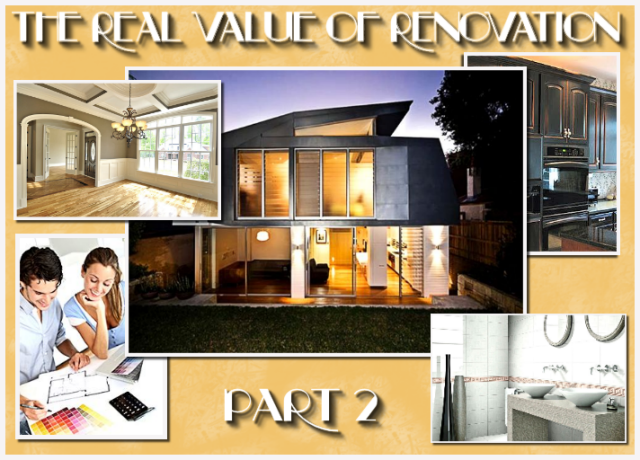Looking to Renovate? Here’s the Best of the Best (and the Worst than Bad) of Renovating
The Best of the Best
Workmanship – a job well done, whether by yourself or a hired professional, shows. Whether the job is cosmetic or a deeper fix, the work should be of high quality.
Design – well thought out and beautiful, with attention to use, style, scale, and materials; a great design can add the most value to the renovation.
Utility – the more something is used and enjoyed, the more the renovation is worth. Improved access, storage, or other everyday needs is among the most valuable work you can have done. When doorways, stairs or other access points get renovated – check for scale and materials that are user-friendly. Ensure that people can pass each other and that furniture can move where it is needed. Renovations that are difficult to use are a failure.
Lighting – lighting fixtures can be expensive and are very subjective. Consult with a lighting designer and use bright lights that are recessed and well-placed. Avoid the expensive, over-the-top dining room chandelier unless the intention is to use it for years.
Electrical/Plumbing – while not a “sexy” renovation, knowing that the two greatest conveniences of modern living are up-to-date and functioning well is a huge benefit to a homeowner. Document all repairs and renovations and keep the information on hand to show the quality of the work, since it is hidden behind walls and more difficult to assess.
Roof/Foundation/Windows – like electrical and plumbing, renovations that include improvements to a roof, windows or a foundation can add a measure of security as well as immediate and tangible value to a home. Preventing water damage and maintaining the structural integrity of the home is of the highest concern. Ensuring that quality work is done with an eye towards the style of the home is paramount in getting the highest return on this investment.
Kitchen/Bathroom/Basement/Garage – creating MORE timeless and classic space that is used frequently gets the most return in resale value. Storage is king in any of these spaces, but it should be useful and accessible.
Worse than Bad
Conversely, poorly designed renovations, including poor stylistic or configuration choices, shoddy workmanship or materials can deter a buyer or render your own renovation a failure. Avoid the trap of using the wrong materials: fixtures that are too big, or obviously bought because they were on sale/seconds, using the wrong windows, or inadequate materials for the project that won’t hold up in the locale or manner of use.
Fad renovations often lack long-term usability; that disco playroom or man-cave may look cool, but updating it again in a few years may be impractical. Everyone loves a steam room, sauna, billiard room or workout room, but maintenance and upkeep might make it less attractive. Furthermore, repurposing a bedroom or garage for a renovation of this sort removes spaces that future owners may find vital, so this further jeopardizes return on the investment.
Some renovations don’t go far enough. Redoing the kitchen or a bathroom without updating the wiring is an example of this. Putting in a bedroom, but failing to make it big enough or to follow the building code, is another example. Seek to find renovations that provide a lot of utility for the dollar, while accomplishing all that is actually required. If you really can’t afford to renovate, perhaps waiting is a better idea.
We all know when something is, “Just a little ‘off’.” One of the worst things is a great idea, done well and with fine materials, that just misses the mark; perhaps there is a corner that always gets in the way or that constantly causes someone to get hurt, or maybe it is a cabinet that opens in the wrong direction. Measurements that are off and made right with a work-around, all of these “little things” end up making a good thing into a frustration.
Don’t bash a lot of bedrooms. Converting a little-used bedroom to an office is one thing, but build-ins can diminish the ability to use the room as a bedroom again, potentially limiting the use of the room in the future. Consider carefully before repurposing a bedroom in a manner that limits the future utility of the space. The number of bedrooms in a home greatly influences the home’s value. At the same time, putting an extra bedroom in a basement is often a mediocre idea. Code requires two points of egress – a door and usually a window with very specific requirements, which may be expensive. Additionally, basement bedrooms are often unattractive spaces that require special attention to ensure they are not cold and dark.
With these ideas and goals you ought to have a pretty great idea on what (if anything) you want or need to start on to increase the value of your home – and what not to do. If you would like to understand how to view renovations as a buyer, click here to go to our Part 1 of this series. Happy Renovating!
